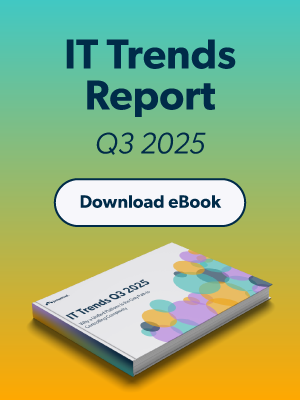Updated on October 24, 2025
A superuser account represents the highest level of administrative privilege within a computer system. This specialized user account operates without the standard access restrictions that govern regular users. System administrators rely on superuser accounts to perform critical maintenance, configuration, and troubleshooting tasks that require unrestricted system access.
Understanding superuser accounts is essential for IT professionals managing enterprise environments. These accounts serve as the foundation for system administration across all major operating systems. However, their unlimited power demands careful handling to maintain security and system integrity.
The concept applies universally across operating systems, though implementation details vary. Unix-like systems use the “root” account, while Windows systems employ the “Administrator” account. Both provide complete system control but require different approaches for secure usage.
Definition and Core Concepts
A superuser account is a user account with complete administrative privileges in an operating system. This account bypasses all standard file permissions and access controls. The superuser can modify any system file, install software, manage user accounts, and alter system configurations without restriction.
The primary purpose centers on enabling system administrators to perform tasks that affect the entire system. These include kernel modifications, driver installations, and critical security updates. Without superuser access, administrators cannot maintain system health or respond to security incidents effectively.
Several foundational concepts define superuser functionality:
- Principle of Least Privilege: This security concept states that users should receive only the minimum privileges necessary for their roles. Superuser accounts directly violate this principle, making their careful use critical for system security.
- Privilege Elevation: The process allowing standard users to temporarily gain superuser privileges for specific tasks. This approach reduces security risks while maintaining administrative capability.
- Root: The conventional name for superuser accounts on Unix-like operating systems, including Linux and macOS. The root account typically carries a User ID (UID) of 0, distinguishing it from all other accounts.
- Administrator: The Windows equivalent of the superuser account. Microsoft’s implementation includes additional security layers like User Account Control (UAC) to manage privilege elevation.
How It Works
The superuser account is integrated into the operating system’s core architecture. Unlike regular user accounts, it operates outside standard access control mechanisms. This fundamental design enables complete system control but creates significant security exposure.
- Direct Login: Administrators can log in directly as the superuser to perform system tasks. On Linux systems, this involves logging in as root. Windows systems allow direct Administrator login. However, security best practices discourage this approach for routine operations due to elevated risk exposure.
- Privilege Escalation (sudo): Modern Unix-like systems implement the sudo (superuser do) command as a secure alternative. Authorized users can execute individual commands with root privileges without maintaining a persistent superuser session. The system logs all sudo activities for security auditing. This approach limits exposure time while maintaining administrative capability.
- User Account Control (UAC): Windows implements UAC to manage privilege elevation requests. When applications or users attempt actions requiring superuser privileges, UAC displays a prompt requesting explicit approval. This mechanism prevents unauthorized privilege escalation and reduces malware impact by requiring conscious administrator consent.
Key Features and Components
- Unrestricted Access: Superuser accounts can read, write, and execute any file regardless of ownership or permission settings. This capability extends to system files, user data, and configuration files across the entire system.
- System-Wide Control: These accounts manage all system services, install device drivers, modify kernel parameters, and control all other user accounts. Superusers can start and stop critical services, modify network configurations, and alter security policies.
- Single Point of Compromise: The unlimited access makes superuser accounts prime targets for attackers. Successful compromise grants attackers complete system control, making these accounts critical security assets requiring maximum protection.
Use Cases and Applications
- System Maintenance: Superuser accounts enable installation of operating system updates, configuration of network interfaces, and management of system services. These tasks require system-level access unavailable to standard users.
- Security Audits: Security professionals use superuser access to review system logs, analyze security configurations, and investigate potential breaches. This access enables comprehensive security assessments and incident response activities.
- User Management: Administrators create, modify, and delete user accounts through superuser privileges. This includes password resets, permission modifications, and account provisioning for new employees.
- Disaster Recovery: System restoration from backups requires superuser access to replace critical system files and restore proper permissions. Corrupted file system repairs also demand these elevated privileges.
Advantages and Trade-offs
- Advantages: Superuser accounts provide the necessary authority to manage and maintain computer systems effectively. They enable administrators to perform essential system-level tasks that ensure operational continuity and security. Without superuser access, critical maintenance and emergency response become impossible.
- Trade-offs: These accounts represent severe security risks if compromised. A single mistake while operating as superuser can cause catastrophic system failure. The unlimited access makes every action potentially system-threatening, requiring careful consideration and expertise for safe operation.
Key Terms Appendix
- Root: The superuser account name on Unix-like systems, including Linux and macOS.
- Administrator: The superuser account name on Microsoft Windows operating systems.
- sudo: A command-line utility on Unix-like systems enabling users to execute commands as another user, typically the superuser.
- User Account Control (UAC): A Windows security feature that limits administrator privileges for routine tasks and requires explicit approval for privileged operations.
- Principle of Least Privilege: A security concept limiting user access to the minimum required for their job functions.




